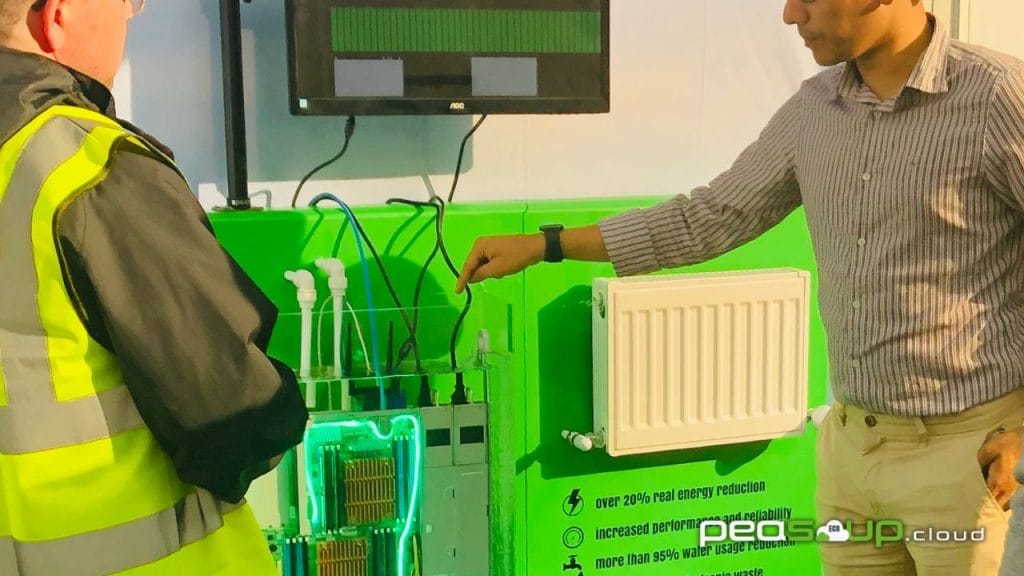Liquid immersion cooling as an efficient solution for data centres
Is liquid immersion cooling an efficient solution for data centres?
We believe it is indeed. The exponential growth of data stored in the cloud calls for efficient cooling solutions in data centres. Liquid immersion cooling emerges as a promising technology that could revolutionise data centre cooling. This innovative approach involves submerging computer hardware in a non-conductive dielectric fluid, effectively removing heat, resulting in significant energy savings and improved performance.
The advantages of liquid immersion cooling for data storage in the cloud are notable. Firstly, it offers exceptional cooling efficiency, reducing energy consumption by up to 45% and leading to substantial cost savings. The method also excels at heat removal from computer hardware, optimising performance and extending hardware lifespan. Secondly, this method is highly scalable, accommodating data centres of any size.
However, challenges accompany its adoption for data storage in the cloud. Being a relatively new technology, its long-term reliability remains to be determined. Also, the initial capital needed to install this technology can be higher than traditional solutions.
Moreover, specialised equipment and training are required, making implementation difficult for some organisations. This article explores how liquid immersion cooling can be an efficient solution to data centre cooling.
Although there are some challenges relating to uncertainty due to its novelty, initial investment and implementation, liquid immersion cooling presents immense potential to transform data centre cooling. With the growing volume of data stored in the cloud and processing power, this innovative technology is gaining fast popularity in the data storage industry.
How it works
Liquid immersion cooling is an innovative technique that involves submerging computer equipment in a non-conductive dielectric fluid to dissipate heat efficiently. This process works by leveraging the superior heat transfer properties of the liquid. As the computer components are immersed in the fluid, the heat generated by the hardware is rapidly transferred to the surrounding liquid through conduction. In direct contact with the components, the fluid absorbs the heat and carries it away. Subsequently, convection comes into play as the heated liquid rises due to thermal expansion, creating a natural circulation that promotes efficiency. This combination of conduction and convection ensures effective heat removal and helps maintain optimal operating temperatures for the hardware.
Its benefits
Liquid immersion offers numerous benefits, making it an attractive solution for efficient heat dissipation in computer hardware.
Firstly, this method provides significantly higher capabilities compared to traditional methods. The direct contact between the hardware and the fluid enables better heat transfer, resulting in lower operating temperatures and reduced risk of overheating. Additionally, this technique is exceptionally effective for densely packed electronic components. The fluid surrounds every nook and cranny, reaching areas that air cannot easily access, ensuring uniformity across the entire system.
Moreover, this method of cooling is almost silent, eliminating the need for noisy fans. It also eliminates the need for extensive air conditioning systems, reducing energy consumption and associated costs. Liquid immersion cooling also can extend the lifespan of computer hardware. Maintaining lower operating temperatures mitigates thermal stress on the components, leading to improved reliability and longevity.
Lastly, using non-conductive biodegradable dielectric fluids ensures a safe environment for the hardware, minimising the risk of short circuits or electrical damage. Overall, liquid immersion cooling offers superior performance, reduced noise, energy efficiency, enhanced hardware reliability, and a safer operational environment, making it a compelling choice for advanced solutions.
Drawbacks
Just as every coin has two sides, liquid immersion cooling has some drawbacks too. Firstly, the initial investment cost for its installation can be higher compared to traditional solutions. Implementing liquid immersion cooling requires knowledge, specialised equipment and training, which can pose implementation challenges. Safety is another crucial consideration, as proper adherence to safety protocols is essential to mitigate potential risks.
Despite these drawbacks, data centre cooling is an attractive and effective solution for data centres, given its superior performance and enhanced efficiency. It represents a promising technology with the potential to revolutionise data centre cooling. Its benefits, including increased efficiency, improved performance, and enhanced reliability, make it an attractive cloud data storage option. However, challenges such as cost, some complexity, and safety considerations must be carefully addressed. As the demand for high-performance cloud data storage continues to rise, this method will likely gain fast traction as an efficient and effective solution for data centres.

